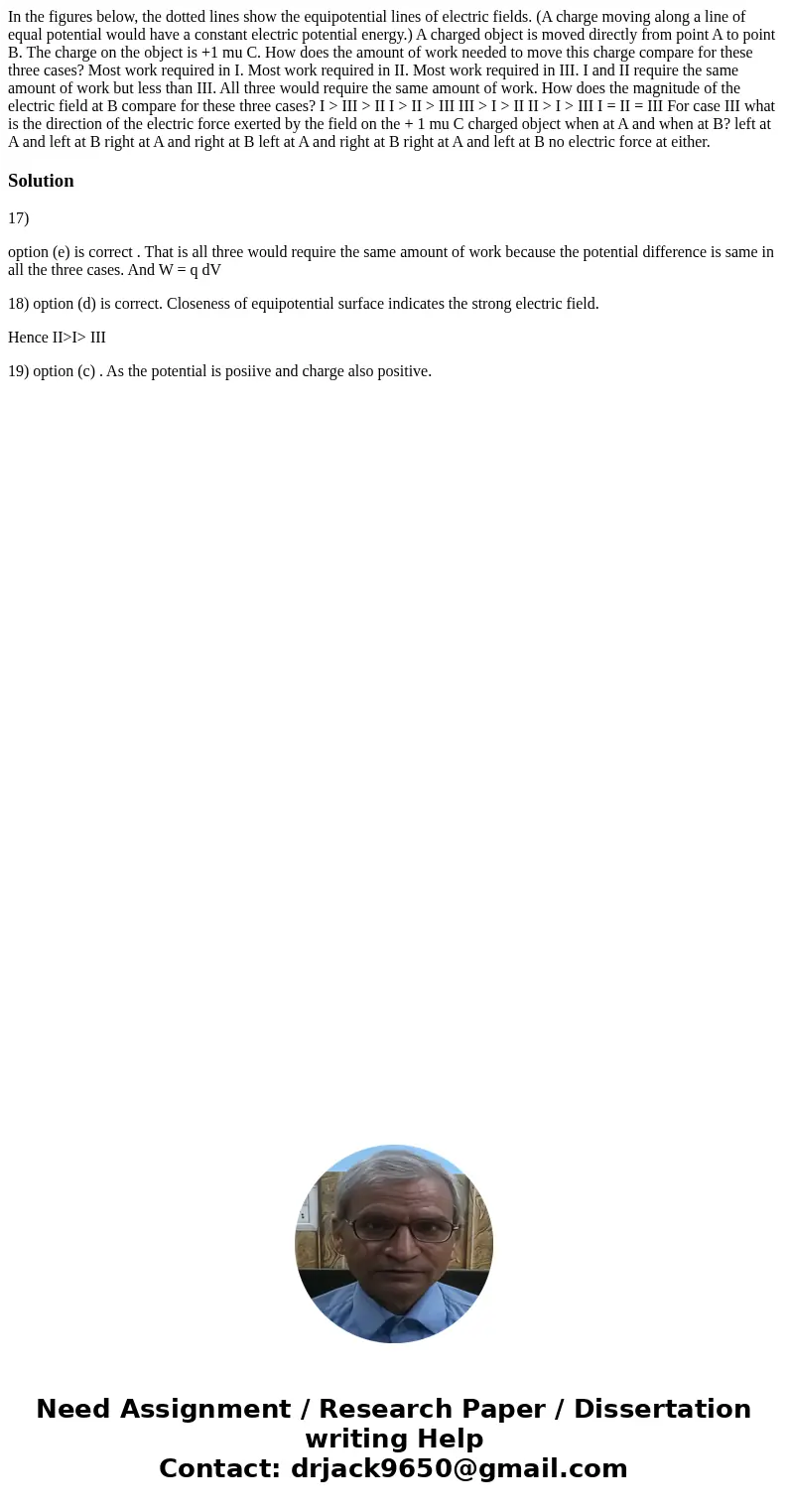In the figures below the dotted lines show the equipotential
In the figures below, the dotted lines show the equipotential lines of electric fields. (A charge moving along a line of equal potential would have a constant electric potential energy.) A charged object is moved directly from point A to point B. The charge on the object is +1 mu C. How does the amount of work needed to move this charge compare for these three cases? Most work required in I. Most work required in II. Most work required in III. I and II require the same amount of work but less than III. All three would require the same amount of work. How does the magnitude of the electric field at B compare for these three cases? I > III > II I > II > III III > I > II II > I > III I = II = III For case III what is the direction of the electric force exerted by the field on the + 1 mu C charged object when at A and when at B? left at A and left at B right at A and right at B left at A and right at B right at A and left at B no electric force at either.
Solution
17)
option (e) is correct . That is all three would require the same amount of work because the potential difference is same in all the three cases. And W = q dV
18) option (d) is correct. Closeness of equipotential surface indicates the strong electric field.
Hence II>I> III
19) option (c) . As the potential is posiive and charge also positive.

 Homework Sourse
Homework Sourse